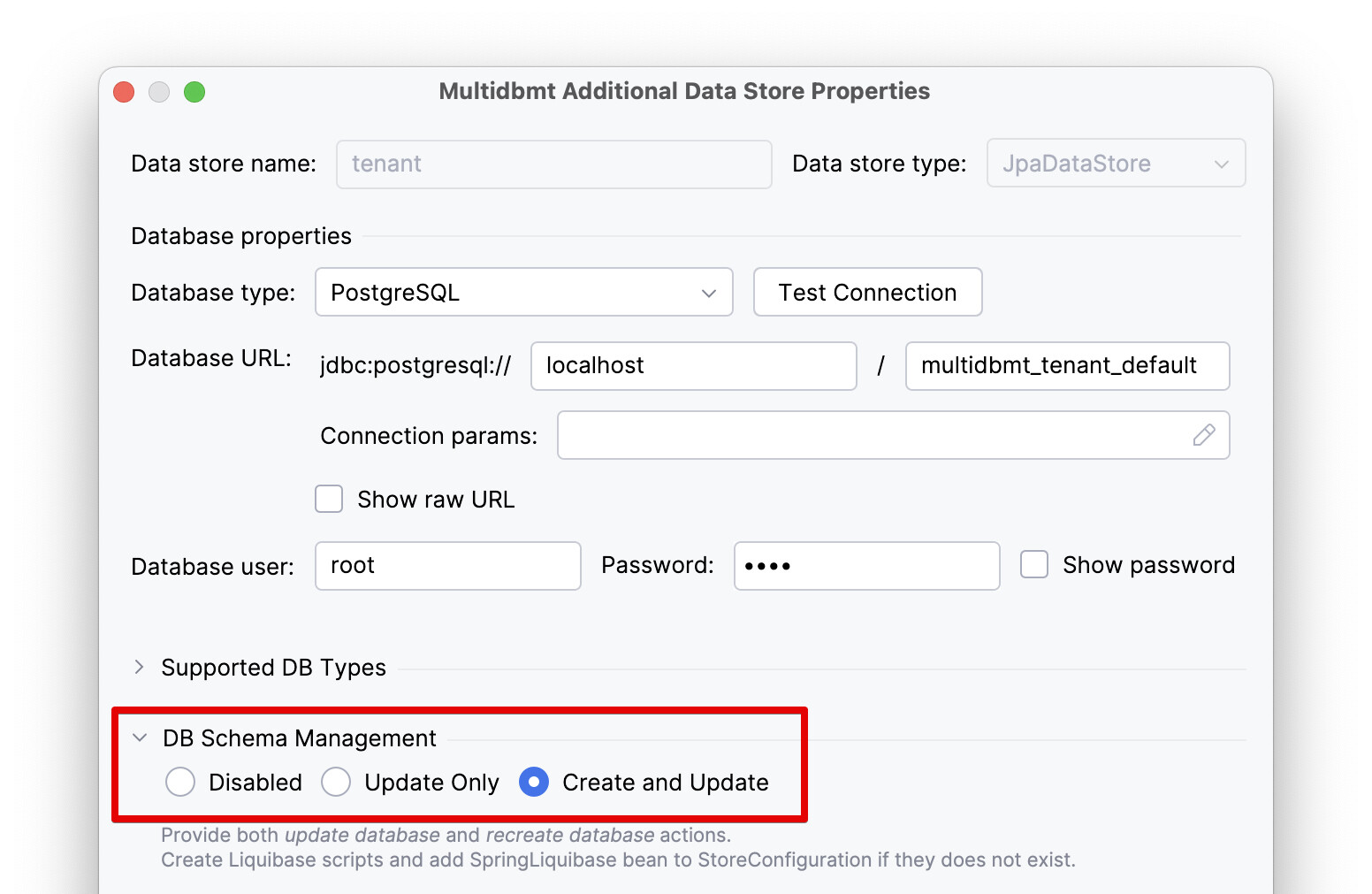Hi,
I am interested to any solution that allows me to use multidatabases in jmix app for a multitenancy approach.
I am a little familiar with jmix and build some relatively small apps with it and i am realy interested in migrating my erp solution that i have on postgresql database and legacy vfp to jmix. Due to more factors we decided that for us the only viable solution is with multidatabase and not schemas or tennant_id fields inside one database as we need scalling and have to deal with our existing data.
From a user perspective the user will enter it’s credentials and choose a database on main page and then app will connect to that database. When user wants to connect to another one it will chose another database and so on.
It is possible for jmix app to connect to a master database on that cluster and will store users and internal tables that it needs as normaly but then app will somehow have to deal with the database user choosed and all the entities will map to that database. Even it will not function some jmix stuff i am interested if that approach could work and some feedback if you have how it can be done with some examples so I have to start with.
Thanks.
Camil Ghircoias
